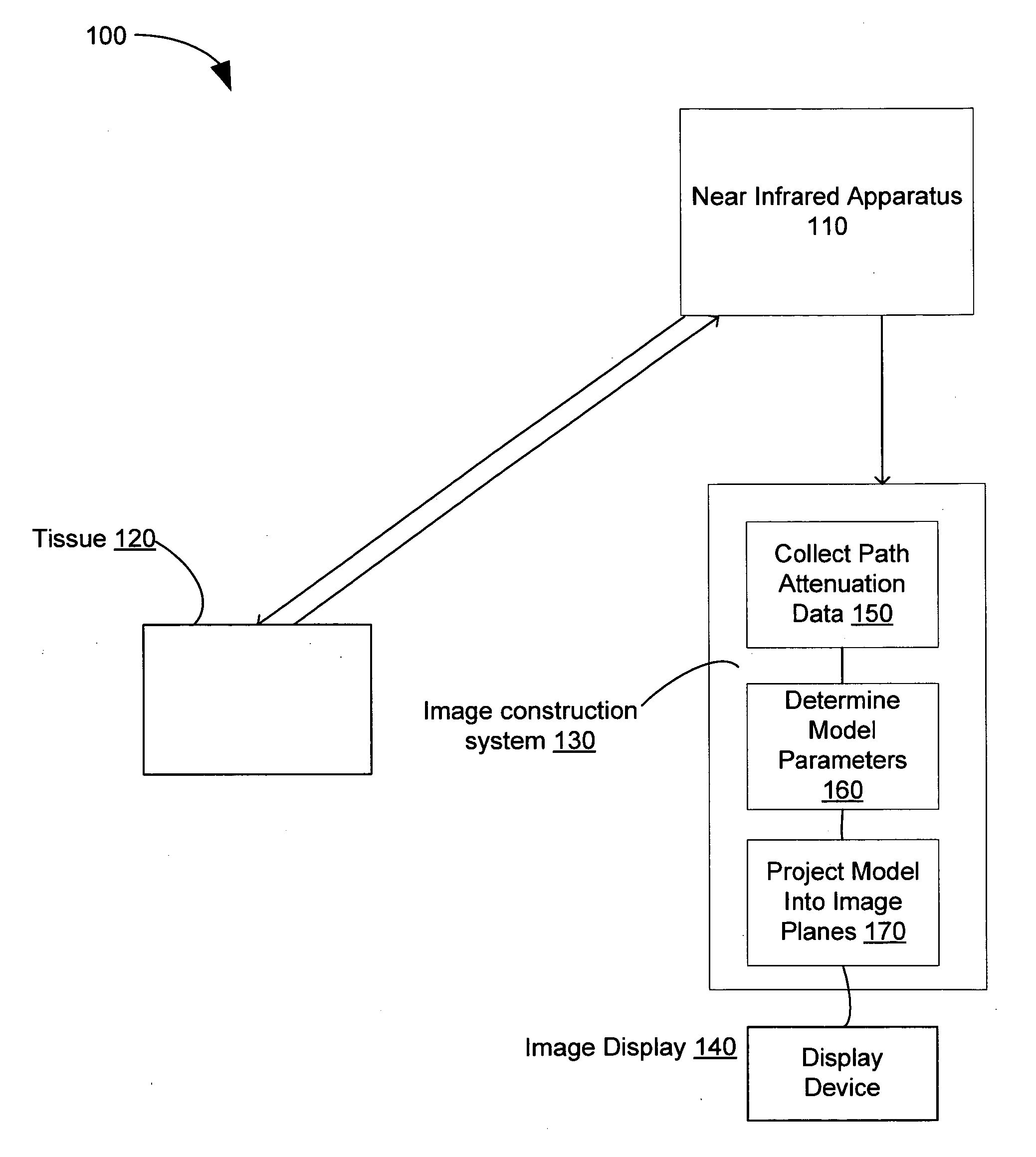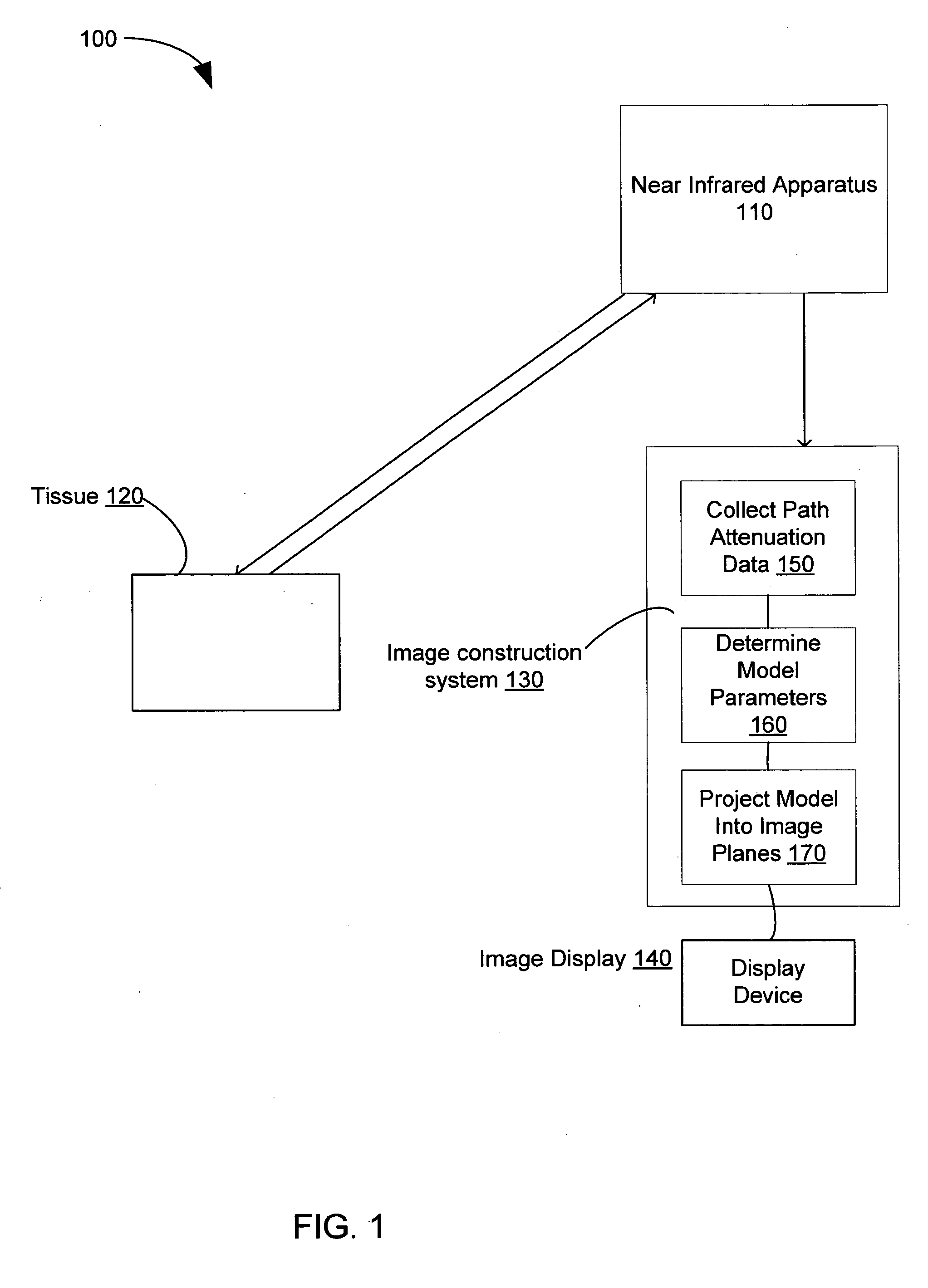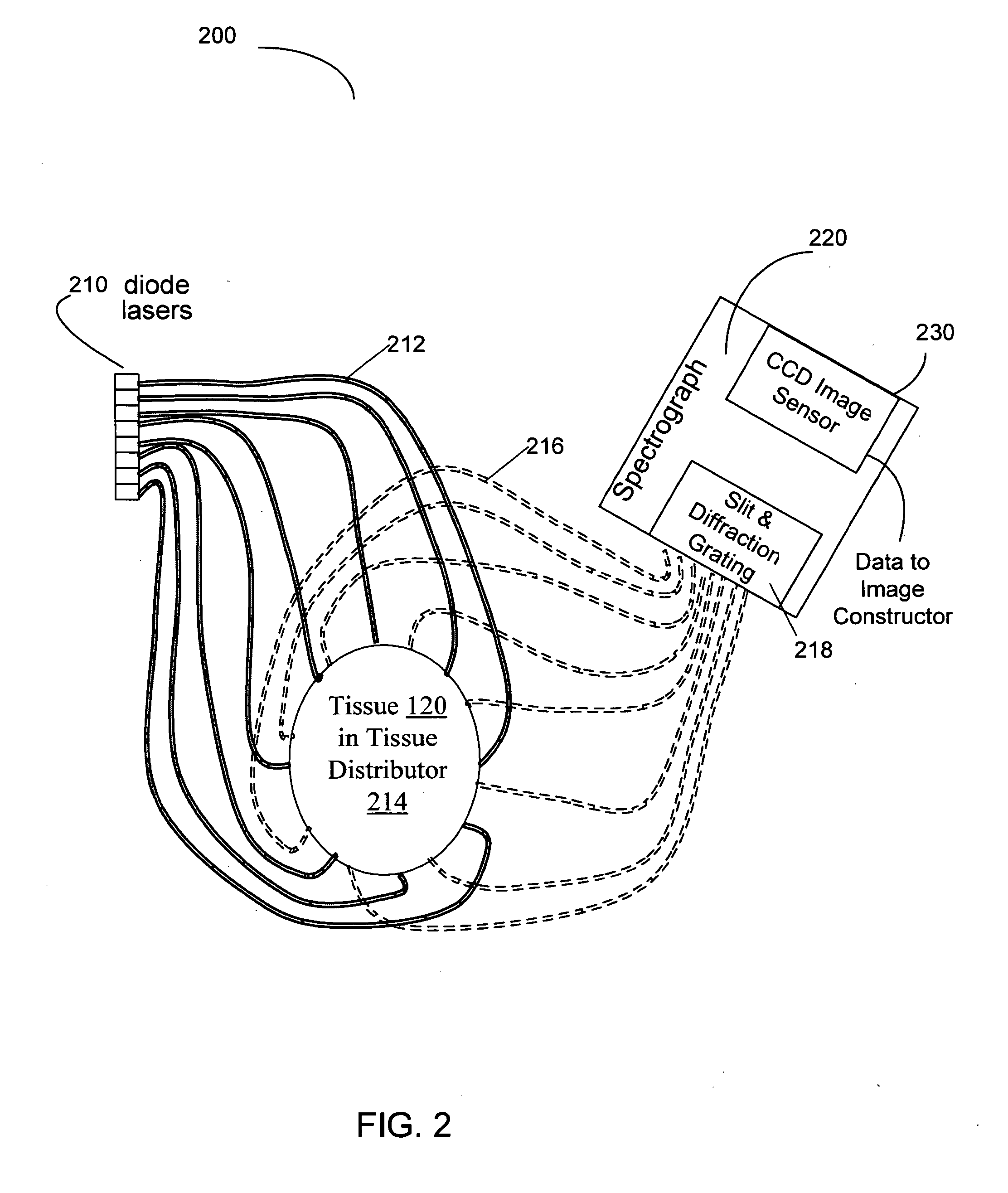System and method for spectral-encoded high-rate hemodynamic tomography
a hemodynamic tomography and spectral encoded technology, applied in mammography, medical science, diagnostics, etc., can solve the problems of requiring significant acquisition time to gather sufficient path attenuation and scattering data, and the use of electromagnetic radiation of these wavelengths for imaging
- Summary
- Abstract
- Description
- Claims
- Application Information
AI Technical Summary
Problems solved by technology
Method used
Image
Examples
Embodiment Construction
[0032] It has been found that the spectral characteristics of features within mammalian tissue are sufficiently broad that, if visible or near-infrared light from a group of single-mode lasers are used to interrogate tissue with small wavelength separation between lasers, radiation from each laser suffers levels of attenuation and scattering largely similar to radiation from the other lasers of the group.
[0033] When lasers at separate wavelengths are associated with different source positions, a spectral encoding of source origin occurs in a way that can be detected and decoded in parallel at any reception point.
[0034]FIG. 1 shows a System 100 of Spectral-Encoding for High-Rate Hemodynamic Tomography. The System 100 includes a near-infrared apparatus 110, mammalian tissue 120, an image construction system 130, and an image display 140. A tissue model, or phantom, may be used in place of tissue 120 during development and calibration. The near-infrared apparatus 110 generates path-a...
PUM
 Login to View More
Login to View More Abstract
Description
Claims
Application Information
 Login to View More
Login to View More - R&D
- Intellectual Property
- Life Sciences
- Materials
- Tech Scout
- Unparalleled Data Quality
- Higher Quality Content
- 60% Fewer Hallucinations
Browse by: Latest US Patents, China's latest patents, Technical Efficacy Thesaurus, Application Domain, Technology Topic, Popular Technical Reports.
© 2025 PatSnap. All rights reserved.Legal|Privacy policy|Modern Slavery Act Transparency Statement|Sitemap|About US| Contact US: help@patsnap.com



